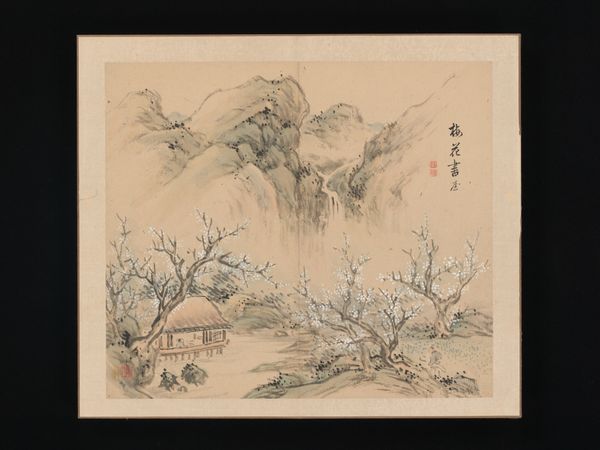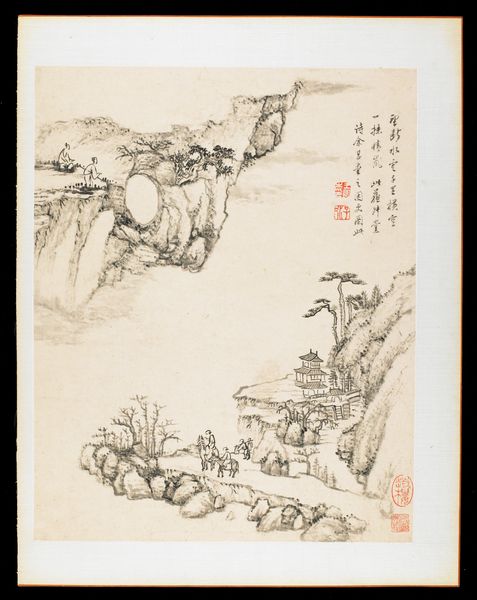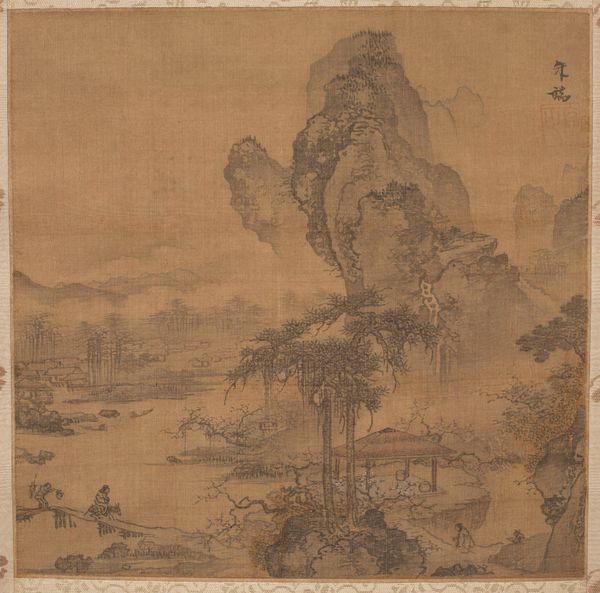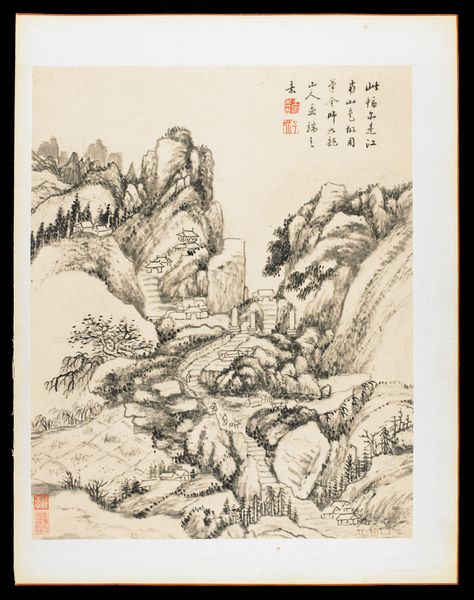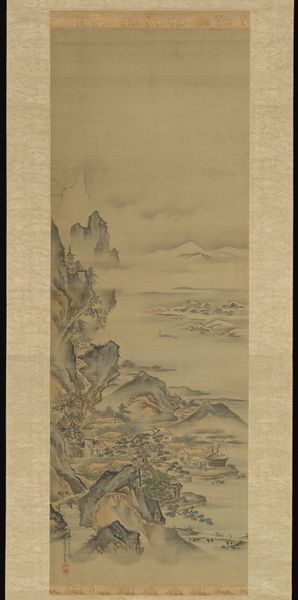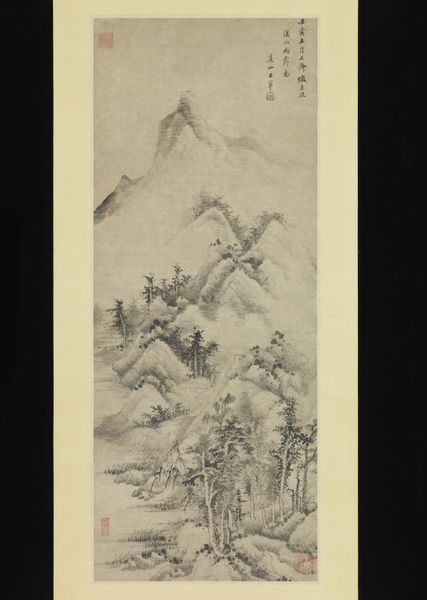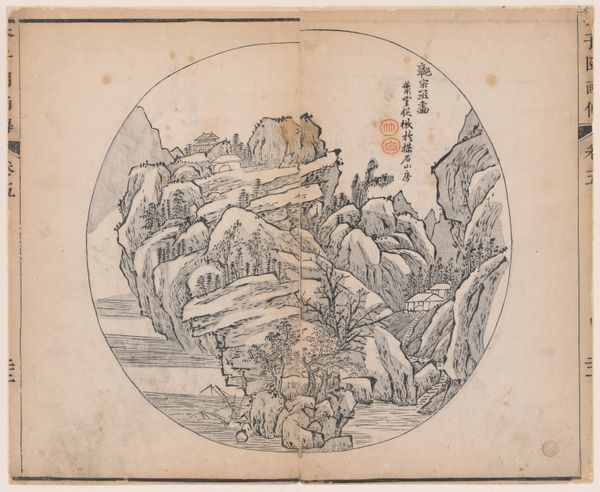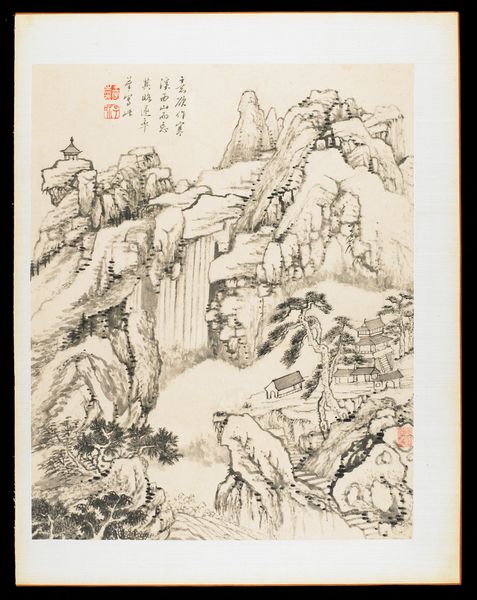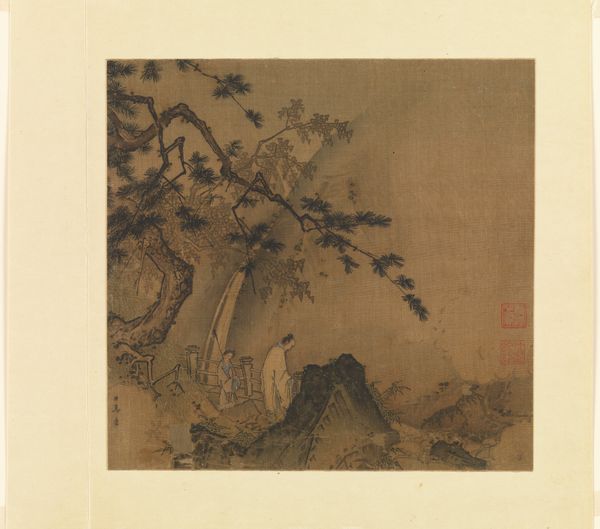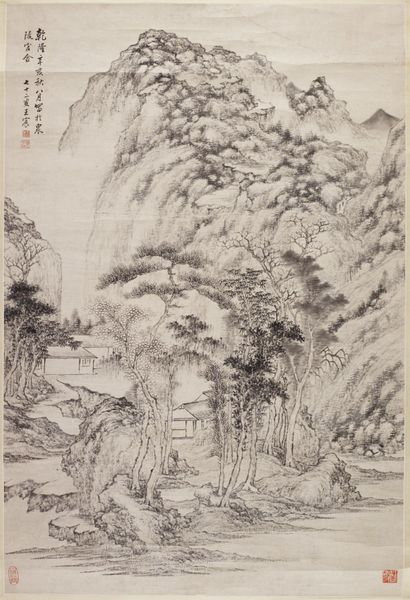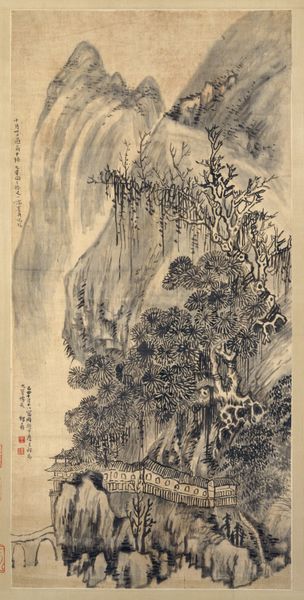
Dimensions: Image: 60 × 60 in. (152.4 × 152.4 cm)
Copyright: Public Domain
Editor: This is Hine Taizan’s “At leisure in a lakeside grove in autumn,” painted around 1850. It's ink on paper, and looking at it, I immediately feel a sense of tranquility. The misty mountains and serene lake create such a peaceful scene. What do you see in this piece, beyond the obvious beauty? Curator: The artwork breathes with symbolism deeply rooted in East Asian cultural memory. Note the layering of forms, Editor; the mountains, lake, and dwellings aren’t simply objects, they’re ideograms. Mountains traditionally represent stability and the heavens, while water symbolizes fluidity and the source of life. Do you see how the houses nestle at the base of the mountains? Editor: I do. It almost feels like they're protected or in harmony with nature, instead of fighting against it. Curator: Precisely! And consider the autumn setting. In East Asian art, autumn often signifies reflection and a graceful acceptance of impermanence. This image suggests more than just a picturesque landscape. It suggests a specific attitude towards living within the rhythms of nature. The “leisure” in the title hints at the value of mindful repose. It evokes cultural ideals. Editor: So it's less about accurately portraying a landscape and more about conveying a state of mind and a cultural ideal through symbolic representation? Curator: Exactly. The artist isn’t simply showing us a scene, they're inviting us to participate in a particular cultural understanding. There’s even psychological resonance in the depiction of depth and perspective, inviting introspection and contemplation. Editor: That’s fascinating! I’ll never look at a landscape the same way again. Curator: Indeed. Seeing such works with awareness, understanding symbols, deepens our sense of connection, reminding us of shared humanity across time and cultures.
Comments
No comments
Be the first to comment and join the conversation on the ultimate creative platform.
